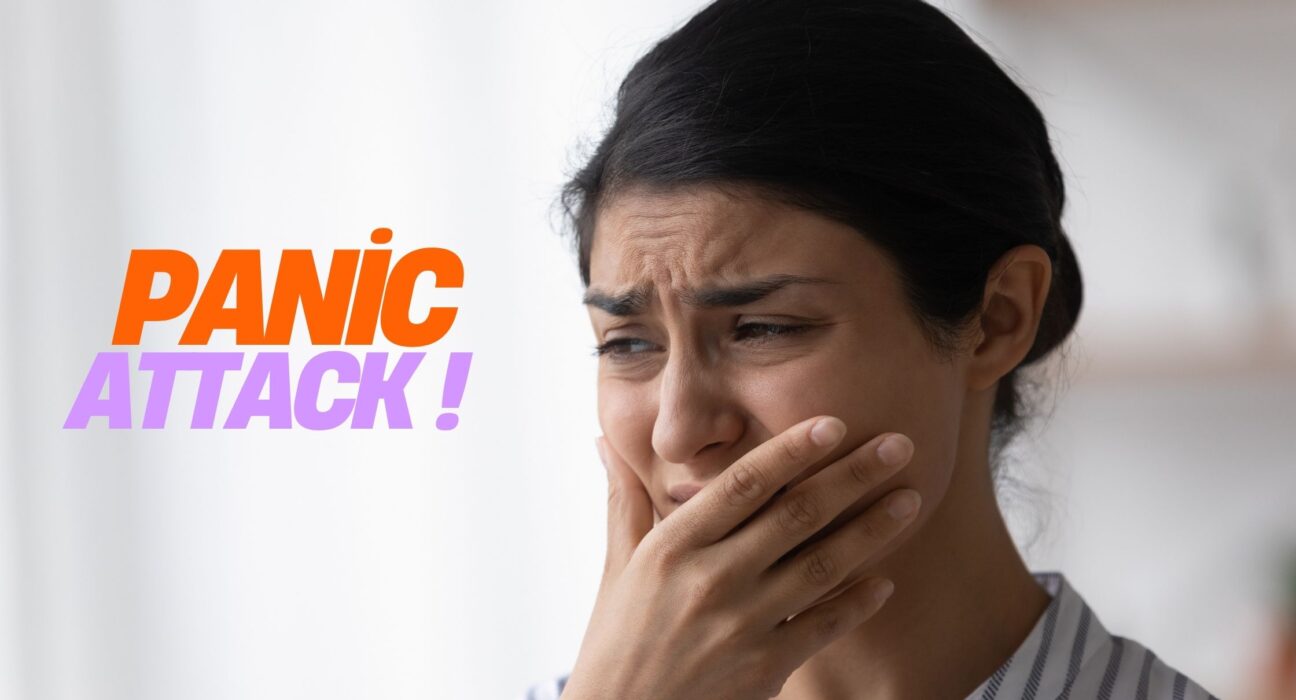10 Common Panic Attack Symptoms You Should Never Ignore

In today’s fast-paced, high-stress world, many individuals experience sudden and overwhelming episodes of intense fear or discomfort. These episodes are medically recognized as panic attack symptoms and can occur without any warning or clear reason. While occasional anxiety is a natural part of life, panic attacks are more severe, often leaving individuals feeling helpless and frightened. Recognizing the symptoms of a panic attack is crucial for timely intervention and effective management.
Many people confuse panic attacks with anxiety or even physical ailments like heart problems due to the intensity of symptoms. This confusion can delay diagnosis and treatment. Understanding the key signs and differentiating them from other health issues can make a significant difference in improving mental well-being and overall quality of life.
In this blog, we’ll dive deep into the 10 most common panic attack symptoms that you should never ignore. We’ll also explore the science behind these symptoms, how they differ from anxiety attacks, and what causes panic attacks. Whether you’re seeking clarity for yourself or want to help a loved one, this comprehensive guide will equip you with the knowledge to recognize and respond appropriately to panic attacks.
What Is a Panic Attack?
A panic attack is a sudden episode of intense fear that triggers severe physical reactions when there is no real danger or apparent cause. These episodes typically last between 5 to 30 minutes but can feel much longer for the person experiencing them.
Panic attacks are a hallmark symptom of panic disorder, but they can also occur as part of other mental health conditions or independently. While panic attacks are not life-threatening, they can be extremely frightening and may significantly interfere with daily life.
Symptoms often mimic those of a heart attack or other serious medical conditions, leading many individuals to seek emergency medical care. Understanding what a panic attack is can help reduce fear and encourage more proactive mental health management.
Panic Attack vs Anxiety Attack: What’s the Difference?
Though often used interchangeably, panic attacks and anxiety attacks are not the same. Here’s how they differ:
| Feature | Panic Attack | Anxiety Attack |
|---|---|---|
| Onset | Sudden and unexpected | Gradual and linked to stress or worry |
| Intensity | Severe and overwhelming | Mild to moderate |
| Duration | Typically 5–30 minutes | Varies (minutes to hours) |
| Physical Symptoms | Intense (e.g., heart palpitations, chest pain) | Less intense (e.g., muscle tension, fatigue) |
| Diagnosis | DSM-5 classifies panic attacks specifically | Anxiety attacks are not clinically defined in DSM-5 |
Understanding the difference is essential for proper treatment and prevention strategies.
10 Common Panic Attack Symptoms You Should Never Ignore
Here are the ten most common symptoms that indicate you might be experiencing a panic attack:
1. Rapid Heartbeat or Palpitations
One of the first noticeable physical symptoms of a panic attack is a racing or pounding heart. This happens due to the body’s “fight or flight” response, which increases adrenaline and speeds up the heart to prepare you for danger.
Many people mistake this for a heart attack, especially during their first panic attack. While the feeling can be terrifying, it’s usually harmless and temporary.
2. Shortness of Breath or Hyperventilation
Another alarming symptom is difficulty breathing or feeling like you can’t get enough air. Hyperventilation is common during a panic attack and can make you feel even more panicked.
It may feel like you’re suffocating or choking, which only worsens the anxiety. Controlled breathing techniques can help restore calm.
3. Chest Pain or Discomfort
Chest pain during a panic attack can be sharp or tight, mimicking a heart attack. This symptom often leads people to emergency rooms, fearing a cardiac event.
However, unlike heart-related chest pain, panic-induced pain typically comes with other symptoms like fear, dizziness, and a sense of doom.
4. Dizziness or Lightheadedness
Panic attacks can disrupt oxygen balance in your body, especially during hyperventilation. This leads to dizziness or a floating sensation, making it hard to stay upright or focused.
You may feel like you’re going to faint, though fainting is rare during panic attacks.
5. Sweating or Chills
Sweating profusely or experiencing chills—even in a comfortable room—are common panic attack symptoms. These temperature fluctuations are due to a sudden adrenaline rush.
This symptom is often mistaken for hormonal issues or infections, so context is essential when evaluating it.
6. Nausea or Upset Stomach
During a panic attack, blood flow is redirected away from the digestive system to muscles, which can cause stomach discomfort, nausea, or even vomiting.
These symptoms may persist for hours after the attack subsides and are often misdiagnosed as food poisoning or gastrointestinal distress.
7. Trembling or Shaking
Involuntary muscle shaking is common and often accompanied by a sense of losing control. The tremors are due to the body’s heightened state of arousal and increased adrenaline.
It’s a visible and often embarrassing symptom, especially in public settings.
8. Numbness or Tingling Sensations
Tingling in the hands, feet, or face can occur due to hyperventilation and altered blood circulation. These sensations are harmless but can make individuals feel detached from their body.
This symptom is medically termed paresthesia and is often misinterpreted as a sign of stroke or nerve damage.
9. Feeling of Unreality (Derealization) or Detachment (Depersonalization)
Many people describe feeling like they’re outside their body or in a dreamlike state. These dissociative symptoms can be incredibly disorienting and often amplify the sense of fear.
While not physically dangerous, these mental symptoms can make individuals feel like they’re losing control or “going crazy.”
10. Fear of Dying or Losing Control
The most psychologically distressing symptom is the intense fear that something catastrophic is happening. Many believe they’re dying or losing their mind.
This overwhelming sense of doom is often what distinguishes panic attacks from regular stress or anxiety.
Causes of Panic Attacks
Understanding the causes of panic attacks is essential for effective prevention and treatment. Common causes include:
-
Genetics: Family history of anxiety or panic disorders.
-
Major Stress: Divorce, job loss, bereavement.
-
Trauma: PTSD, childhood abuse, or past medical emergencies.
-
Substance Use: Excess caffeine, alcohol, or drug withdrawal.
-
Health Conditions: Thyroid problems, heart arrhythmias, or vestibular disorders.
While triggers vary, identifying your specific ones can help you manage the condition better.
How Long Do Panic Attacks Last?
Typically, a panic attack peaks within 10 minutes and subsides within 20–30 minutes. However, some symptoms may linger for hours, especially fatigue or uneasiness.
Factors affecting duration include:
-
Emotional resilience
-
Coping strategies
-
Environment and support system
-
Frequency of attacks
Even though how long do panic attacks last varies, frequent or prolonged episodes warrant medical attention.
When to Seek Professional Help
If you experience any of the following, consult a mental health professional:
-
Recurrent, unexpected panic attacks
-
Persistent worry about future attacks
-
Avoidance behavior impacting daily life
-
Physical symptoms that interfere with normal activities
How to Manage Panic Attacks
Here are practical tips and tools for managing panic attacks effectively:
-
Deep Breathing Techniques: Try box breathing (inhale-hold-exhale-hold in 4-second intervals).
-
Grounding Exercises: Engage the five senses to stay connected to the present moment.
-
Therapy: CBT (Cognitive Behavioral Therapy) is highly effective.
-
Medication: SSRIs and benzodiazepines are commonly prescribed when needed.
-
Lifestyle Changes: Exercise, limit caffeine, improve sleep, and practice mindfulness.
Conclusion
Panic attacks can be terrifying, but they are treatable with the right knowledge and support. By understanding the panic attack symptoms and recognizing the early signs, you can take proactive steps to manage your mental health. Whether it’s learning the difference between panic attack vs anxiety attack, exploring the causes of panic attacks, or knowing how long panic attacks last, awareness is the first step toward healing.
If you or someone you know is suffering, don’t hesitate to reach out to a healthcare professional. Your mental well-being matters—start the journey to reclaim control and peace of mind today.








